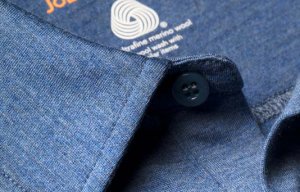
Joe Merino goes 100% ultrafine
Natural fibre outpaces synthetics as consumers prioritise quality and sustainability.

7th November 2025
Knitting Industry
|
Sydney, New South Wales, Australia
Merino wool is experiencing a resurgence, with demand reaching levels not seen in decades as consumers around the world turn away from synthetics in favour of natural, high-performance fibres. From fashion runways to sports arenas, Merino’s appeal lies in its unique balance of comfort, durability and sustainability - qualities that have helped drive one of the largest price increases in the Australian wool market in 30 years.
Australia’s Eastern Market Indicator (EMI) recently climbed 109 cents to 1,453 cents per kilogram, its highest level since mid-2022. Industry experts attribute the rally to genuine consumer demand, lean inventories and renewed confidence across the supply chain. According to The Woolmark Company, the growth reflects long-term trends rather than short-term volatility, as the fibre’s global value is projected to nearly double from USD 34.9 billion in 2022 to USD 63.2 billion by 2033.
“Merino is meeting the moment,” said John Roberts, Managing Director of The Woolmark Company. “As citizens demand more from what they wear - comfort, performance, traceability and responsibility - Merino wool is rising to that challenge.”
A shift towards quality over quantity is reshaping wardrobes worldwide. Consumers are embracing Merino as part of the “fewer, better things” movement, favouring timeless, natural fabrics over fast fashion. Studies show that 91% of shoppers associate better-quality garments with all-natural fibres, and certified Merino commands a 15–30% price premium in luxury markets. Wool garments are also more likely to be donated or repurposed than synthetics, underlining their longevity and value.
Merino has also become a fixture on the international fashion stage, appearing in recent Spring/Summer collections from Dior, Chanel, Thom Browne and Victoria Beckham. At the same time, it has established a strong foothold in performance wear, with brands such as On, Salomon, Patagonia and Lululemon using Merino for its breathability, moisture management and year-round comfort.
A four-year study by North Carolina State University found that 100% Merino base layers deliver up to 96% better thermal comfort than polyester. At the 2025 US Open, Venus Williams wore a Merino wool kit by Luar, reinforcing the fibre’s growing status in professional sport.
For younger consumers, Merino represents more than fashion - it symbolises conscious consumption. With Gen Z and Millennials prioritising transparency and eco-friendly materials, Merino’s natural, renewable and biodegradable properties align perfectly with their values. Sales of premium wool products grew 34% in 2023, and research presented at the Future Fabrics Expo 2025 identified circular fashion, led by wool, as the industry’s biggest opportunity.
With brands such as The North Face, Under Armour and Huckberry incorporating Merino into their latest collections, the fibre’s evolution from traditional knitwear to high-performance essential shows no sign of slowing.

Business intelligence for the fibre, textiles and apparel industries: technologies, innovations, markets, investments, trade policy, sourcing, strategy...
Find out more